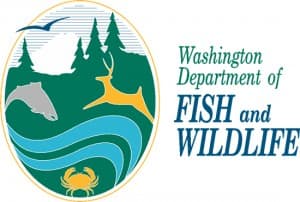Wildlife Managers Seek to Update Information on Pocket Gophers
OutdoorHub 07.26.12

Survey teams from the Washington Department of Fish and Wildlife (WDFW) have been searching the Capitol Forest in Thurston County in recent weeks for signs of Mazama pocket gophers, a protected species with an uncertain future.
Over the next five months, that investigation will expand to include areas of seven other counties as about 30 WDFW biologists and volunteers work to find out more about the range and distribution of the small, burrowing rodent in Western Washington.
Greg Schirato, WDFW’s deputy wildlife program director, said the survey teams will examine both historic pocket gopher sites as well as sightings reported in other areas since the state classified the species as threatened in 2006.
“We’ve received reports in recent years of pocket gophers living in places that don’t show up in any of the scientific research,” Schirato said. “Given property owners’ concerns about land-use regulations associated with protected species, we need to make sure we have a complete picture of the species’ range and distribution.”
Schirato said any new findings will be reflected in a recovery plan for the species that WDFW has scheduled for completion by the end of the year. The department also plans to share its findings with the U.S. Fish and Wildlife Service, which is expected to announce in September whether it will propose listing pocket gophers under the federal Endangered Species Act (ESA).
“In both cases, the findings of this updated survey could affect the future management of Mazama pocket gophers in our state,” Schirato said. “We want to make sure we have a thorough understanding of the species’ status to ensure that future management is consistent with both the species’ biology and landowners’ interests.”
Carrying clipboards and GPS units, the survey teams will look for mounds and other evidence of gophers at hundreds of sites in Thurston, Mason, Pierce, Grays Harbor, Lewis, Clark, Clallam and Wahkiakum counties. New range expansions will be verified by live-trapping the animals.
As part of the investigation, WDFW will seek permission from private landowners in some areas to look for gophers on their property, said Schirato, noting that about half of all known gopher populations are on private lands.
“We need to survey some of those lands to truly understand the species distribution,” he said. “We’re especially interested in private timberlands, where we’ve had some unexpected gopher sightings in recent years.”
Scientists have never considered timberlands prime pocket gopher habitat. WDFW’s initial status review of the species conducted in 2005 describes the Mazama pocket gopher as “a creature of the south Puget Sound prairie landscape.” Two of the state’s largest known gopher populations are at the Olympia Airport and the Shelton Airport.
According to that review, “habitat loss to succession, agriculture and development has eliminated most of the prairie vegetation, and habitat continues to be lost to residential development.” With the state’s remaining pocket gopher population estimated “in the low thousands,” the Washington Fish and Wildlife Commission voted to list the species for state protection in 2006.
Since then, however, gopher mounds have been reported in areas and terrain quite different from the South Sound prairies, Schirato said. Two such areas are the Capitol Forest in Thurston County and forestlands in Mason County – primarily in clear-cut areas, near roadways, and along power line easements.
“We conducted an exploratory survey in forested areas of Mason County last August and confirmed the presence of pocket gophers at several sites through live-trapping,” Schirato said. “Now we’re taking a closer look at those sites and others in Western Washington to update our status report for this species.”
Finding new gopher populations is just one step in determining whether pocket gophers require special protection, Schirato said. Distribution, survival rates and the availability of suitable habitat are also important factors in assessing the future viability of the species, he said.
“This survey isn’t just about finding gopher mounds,” Schirato said. “If we find a significant gopher presence in disturbed forested areas, we have to consider what happens when the trees grow up and the conditions change. We know how these animals use the prairies, but can they survive long-term in other habitats?”
Historically, pocket gophers have played an important role in the ecology of the open meadows, prairies and grasslands at the southern end of Puget Sound, according to the 2005 status report and a number of independent studies. Through their burrowing, they turn the soil, increase plant diversity and provide refuge for smaller animals, according to a range of scientific studies. They are also an important prey species for hawks, owls and other predators.

